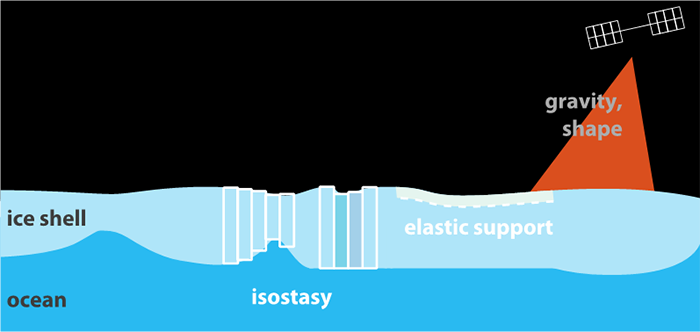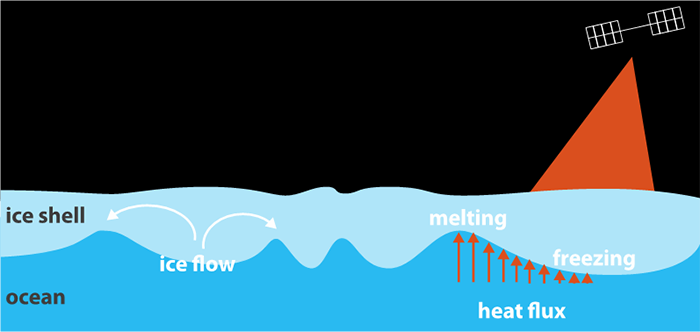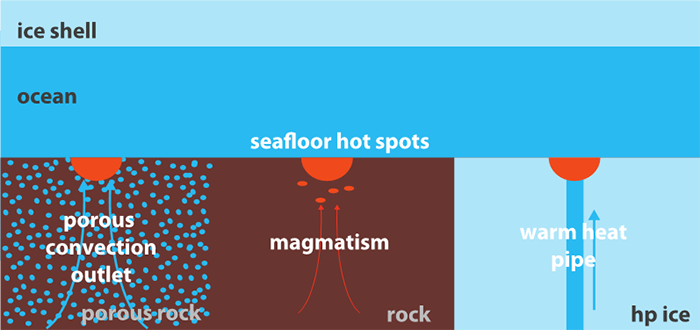COLOSSe Project
Characterization of Ocean Layers in the Outer Solar System
The Earth’s oceans have long been the only examples of liquid water layers on a planetary scale. However, the last two decades have revealed through the exploration of the systems of Jupiter and Saturn by the Galileo and Cassini-Huygens missions, that the Earth is not the only object currently sheltering an ocean of liquid water. Among the moons of Jupiter and Saturn, “ocean worlds” now seem to be the rule rather than the exception. The most spectacular proof was provided by the discovery of water vapor jets and ice grains at the South Pole of Enceladus, projecting samples of buried ocean into space. Cassini’s analysis of these materials revealed the presence of salts similar to those found in terrestrial oceans, silica nano-grains produced by hot water-rock interactions and complex organic macromolecules.
This discovery was echoed in the Jupiter system with the detection of vapour plumes over Europa as well as numerous salt-rich deposits associated with specific geological structures. These chemical signatures of Enceladus and Europa indicate deep water-rock interaction processes but these, as well as the strength of chemical exchanges across the ocean, are still poorly understood.
A key aspect to assess the exobiological potential of these ocean worlds is to better understand the exchange processes between the deep interior and the ice surface, which requires accurate models of ocean dynamics and ice/ocean exchanges. Analyses of geophysical data collected by Cassini on Titan and Enceladus have already indicated a possible signature of ocean dynamics. Many lessons learned from terrestrial oceanography are unfortunately of little use, if only because the powerful surface forcing (thermohaline source/sinks, winds) at the interface with a dynamic atmosphere is replaced, for oceans buried under practically stagnant ice, by a quasi-isothermal phase change. Few studies have attempted to address the 3D dynamics of these oceans. Even if they provide interesting first insights, some key ingredients specific to buried oceans are missing (heterogeneous heat fluxes across the seafloor, mechanical forcings related to rotation, mass and heat exchanges at the ice/ocean interface, effect of compositional stratification).
The ambition of the COLOSSe project is to provide the first theoretical framework to quantify the contribution of each of these processes to the dynamics and evolution of the buried oceans. It will be based on the most recent advances in the modelling of rotating geophysical fluids using a dual numerical and experimental approach. In the light of existing data collected by the Cassini-Huygens mission and in view of future data acquisition by ESA’s JUICE and NASA’s Europa Clipper missions, we wish in particular to answer the following main questions on buried oceans :
- What are the observations that will make it possible to constrain their internal dynamics and evolution?
- What is the physical state of these habitats? What are the different dynamic regimes in a global evolutionary perspective?
- Is stratification a barrier for the transfer of a deep chemical signal caused by the interaction between water and rocks in the cores of Europe or Enceladus?
Presentation of the COLOSSe project in 4 cartoons :




The project coordinator is Gaël Choblet, CNRS Researcher.


